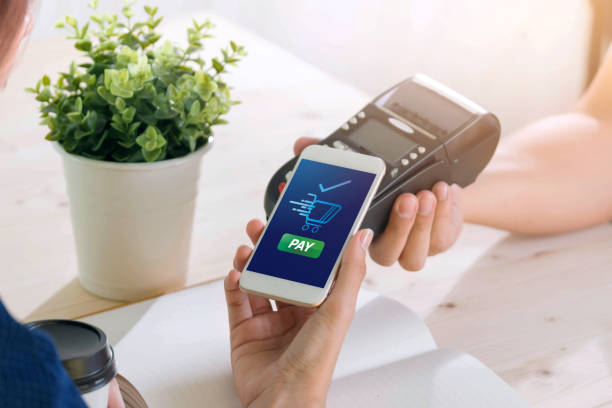Introduction
In recent years, Thailand has seen a surge in mobile payment adoption, driven by technological advancements, changing consumer behaviours, and evolving financial ecosystems. A key player in this growing market is LINE Pay Corporation, the mobile payment service developed by the popular communication platform LINE. This article delves into LINE Pay’s strategies, innovations, and developments that have contributed to the growth of Thailand Mobile Payment Market, exploring the key factors that have helped it stand out among competitors.
LINE Pay Corporation Overview
LINE Pay Corporation is part of LINE Corporation, a Japanese internet giant known for its messaging application LINE, which has gained immense popularity across Asia. LINE Pay was launched to provide users with a seamless, secure, and convenient way to make payments directly through the LINE app. With a strong foundation in mobile communication, LINE Pay has capitalized on its user base to introduce mobile payment solutions that cater to both individual consumers and businesses in Thailand.
Mobile Payment Landscape in Thailand
Thailand's mobile payment market has undergone rapid transformation over the past few years, with smartphones becoming ubiquitous and internet access more widespread. As the Thai population becomes increasingly tech-savvy, there is a shift towards cashless transactions, especially among younger generations and urban dwellers. This has created an opportunity for mobile payment providers like LINE Pay to capitalize on the growing demand for convenient, secure, and efficient payment methods.
LINE Pay’s Strategy in the Thai Market
LINE Pay has adopted a variety of strategies to become a dominant player in Thailand’s mobile payment sector. The company has aligned its services with the digital behavior of Thai consumers by offering multiple features that integrate seamlessly with everyday life.
1. Leveraging the LINE Ecosystem
LINE Pay benefits from being integrated into the widely-used LINE messaging app, which boasts over 40 million active users in Thailand alone. This provides LINE Pay with an extensive and ready user base. By embedding payment functionality directly into the LINE app, the company taps into an existing habit of communication, making it easier for users to adopt mobile payments without needing to download a separate app.
2. Partnerships with Key Retailers and Service Providers
To gain traction in the highly competitive market, LINE Pay has strategically partnered with a variety of retailers, restaurants, and service providers in Thailand. These partnerships enable LINE Pay to expand its footprint and offer more payment options to users. By collaborating with popular retail chains and local businesses, LINE Pay ensures that customers have widespread access to payment options both online and in-store.
3. Localized Promotions and Loyalty Programs
LINE Pay has tailored its marketing campaigns and promotions to suit the tastes and preferences of Thai consumers. By introducing localized offers such as cashback, discounts, and exclusive deals for using LINE Pay at specific merchants, the company is incentivizing users to embrace mobile payments more regularly. Additionally, LINE Pay has integrated loyalty programs that reward customers for making frequent transactions, fostering long-term customer engagement.
Emerging Innovations in the Thai Mobile Payment Market
As Thailand’s mobile payment landscape continues to evolve, LINE Pay has embraced several emerging innovations that contribute to its competitiveness in the market.
1. QR Code Payments
One of the most significant innovations that LINE Pay has introduced is the use of QR code payments. This technology has become popular in Thailand as it allows users to make payments by scanning a simple code with their smartphones, eliminating the need for physical credit cards or cash. LINE Pay has incorporated QR code scanning into its app, making it accessible and user-friendly for both customers and merchants.
2. Digital Wallet and P2P Transfers
LINE Pay has also enabled peer-to-peer (P2P) transfers, allowing users to send money instantly to friends or family members through the app. This feature has gained traction in Thailand, where sending money to loved ones is a common practice. The ease of transferring funds through LINE Pay has made it an attractive alternative to traditional banking methods, further solidifying its place in the market.
3. Integration with Financial Services
In addition to basic payment features, LINE Pay has expanded into providing other financial services, including savings, loans, and insurance. By offering these services directly through the app, LINE Pay provides a more holistic digital finance solution, positioning itself as not just a payment service but also a full-fledged financial platform for users in Thailand.
Development of Secure and Seamless Payment Infrastructure
As digital payments gain popularity, security is a top priority. LINE Pay has invested heavily in ensuring that its platform is secure and compliant with local regulations. The service uses state-of-the-art encryption and multi-factor authentication to safeguard users' financial data. Moreover, LINE Pay has worked to ensure that it complies with Thailand’s regulations surrounding digital financial services, helping to build consumer trust and avoid regulatory issues.
Conclusion
LINE Pay Corporation has positioned itself as a leader in Thailand’s rapidly growing mobile payment market by adopting strategic partnerships, offering localized promotions, and embracing emerging technologies. Through its integration with the LINE app, QR code payments, peer-to-peer transfers, and expansion into broader financial services, LINE Pay has effectively addressed the needs of Thai consumers while staying ahead of market trends. As mobile payments continue to shape the future of finance in Thailand, LINE Pay’s innovations and customer-centric strategies will likely continue to fuel its success and help drive the digital economy in the region.





Comments